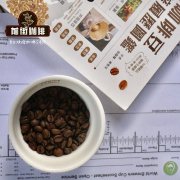Does Bolivian Yongga Karana taste better than coffee in the producing area? what is the Sun Plan for tomorrow?

Professional coffee knowledge exchange more coffee bean information please follow the coffee workshop (Wechat official account cafe_style)
Bolivia Yonggas Karanabi tomorrow Sun Project Copabana Town Julio small Farmers batch washing
(Bolivia Sol de Manana Yongas Caranavi Copabana-Julio)
Producing area: Copabana town of Yongga Karanabi
Baking degree: medium baking
Flavor description: black tea, grapefruit, citrus. Black tea, grapefruit, citrus, orange, roasted dried oyster, almond milk and hazelnut aroma can be felt on the palate.
Bolivia is one of the five most diverse countries in the world. It is a landlocked country surrounded by five countries and deeply affected by it. It has a population of more than 1000. The indigenous Indians, who account for about 60% of the total population, are divided into 36 ethnic groups. Mixed Indo-European (Mestizo) accounts for 26%, in addition to 100 European and other ethnic groups. There are Illmani peaks up to 6462 meters above sea level, Lake Titicaca, the highest and navigable alpine lake in the world, and tropical rain forests! Such a variety of terrain can be said to be a paradise for fine coffee micro-batches.
Bolivia's most famous producing area is Caravani, which, in a broad sense, is part of the Yongas region, which is best known as one of the most dangerous roads in the world, nicknamed Yongas Road, which was named "the most dangerous road in the world" by the Inter-American Development Bank in 1995.
To the north of Yonggaz Road, there is a sharp drop of at least 600m (1830 feet), most of which is no more than 3.2m (10ft) of single-lane width, and there is no guardrail along the road, making the road very dangerous. In addition, Rain Water, fog and dust will also reduce the visibility of driving. On some sections of the road, the road is very muddy, with loose falling rocks from time to time. There is a special local road rule that drivers going downhill must stop at the edge of the cliff on the left instead of driving on the right, and allow drivers to go uphill first. In this way, when meeting each other, the car can be stopped and passed safely and efficiently. This is because Bolivia is a right-going country, so it is mostly left-hand driving. This makes it easier for left-hand drivers to stick their heads out of the window to observe their wheels, avoiding carelessness and falling into the valley under the cliff, making it safer for both sides to meet. However, sometimes there is still a lack of lane width, especially for large cars such as trucks and buses. Often one of the parties has to back up in order to create enough meeting space. On July 24, 1983, a bus suddenly rushed off Yonggas Road and fell into the valley, killing at least 100 passengers. It is said to be the worst traffic accident in the history of Bolivia. According to the statistics from 1999 to 2003, there are an average of 209 traffic accidents on Yongjas Road every year, resulting in 96 deaths. (the introduction to this paragraph is from wikipedia.)
Not to mention, the beans from this producing area must be sent all the way to Chile before they can be sent to you before they are sent to you.
The El Sol de Manana (tomorrow Sun) project. The program put a lot of effort into mentoring member small farmers, providing technical support for various important technologies such as breeding, pruning, fertilization, and harvesting, and purchasing cherries harvested by member small farmers at a higher price, so that farmers' income and quality can enter a good cycle of sustainable management.
END
Important Notice :
前街咖啡 FrontStreet Coffee has moved to new addredd:
FrontStreet Coffee Address: 315,Donghua East Road,GuangZhou
Tel:020 38364473
- Prev

Common varieties of coffee in Honduras introduce the common treatment methods of coffee in Honduras
Professional coffee knowledge exchange more coffee bean information please follow the coffee workshop (Wechat official account cafe_style) Coffee from Honduras is wet-processed, usually inconspicuous in quality and is a good base for blending
- Next

Recommendation of Rugma Pada Manor Coffee in Chimborazo Province, Ecuador _ introduction of Sarchimor
Professional coffee knowledge exchange more coffee bean information please follow the coffee workshop (Wechat official account cafe_style) 2018 Ecuador multi-gold cup No. 1 Chimborazo Rugma Pada Manor Sarchimor washing (Ecuador Chimborazo Finca Lugmapata Enrique Merino Sarchimor Washed} production area: central Chimborazo Province (Chimborazo) products
Related
- Detailed explanation of Jadeite planting Land in Panamanian Jadeite Manor introduction to the grading system of Jadeite competitive bidding, Red bid, Green bid and Rose Summer
- Story of Coffee planting in Brenka region of Costa Rica Stonehenge Manor anaerobic heavy honey treatment of flavor mouth
- What's on the barrel of Blue Mountain Coffee beans?
- Can American coffee also pull flowers? How to use hot American style to pull out a good-looking pattern?
- Can you make a cold extract with coffee beans? What is the right proportion for cold-extracted coffee formula?
- Indonesian PWN Gold Mandrine Coffee Origin Features Flavor How to Chong? Mandolin coffee is American.
- A brief introduction to the flavor characteristics of Brazilian yellow bourbon coffee beans
- What is the effect of different water quality on the flavor of cold-extracted coffee? What kind of water is best for brewing coffee?
- Why do you think of Rose Summer whenever you mention Panamanian coffee?
- Introduction to the characteristics of authentic blue mountain coffee bean producing areas? What is the CIB Coffee Authority in Jamaica?

